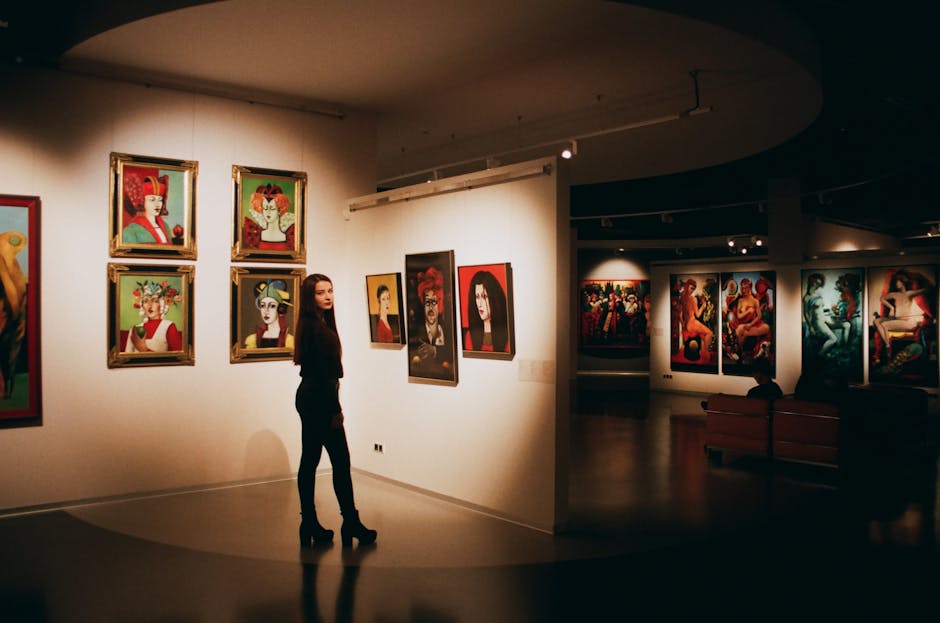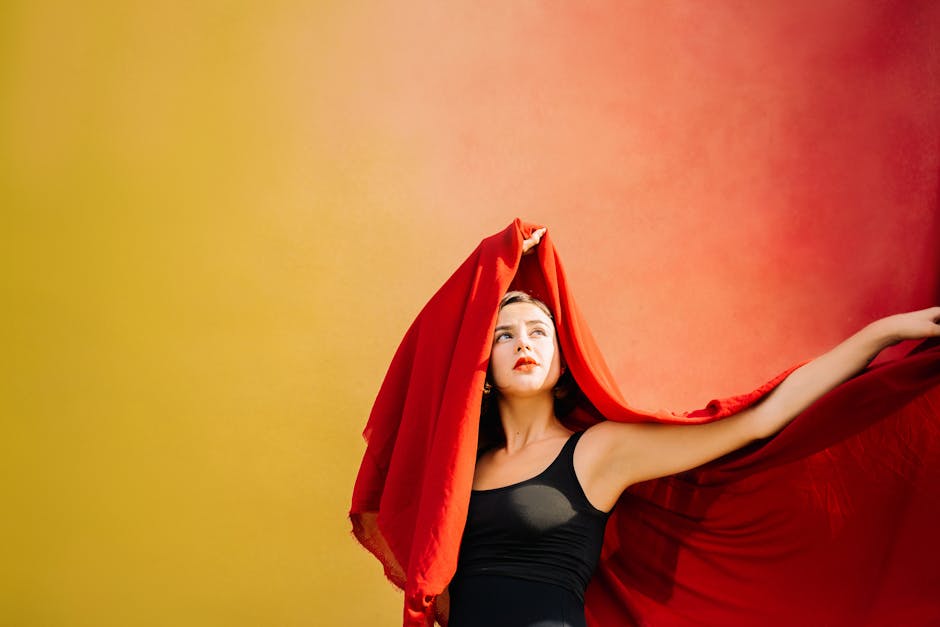Historical Gender Representation
Historically, portraiture has mirrored societal norms of its time. From duchesses in ball gowns to men with stoic gazes, art has broadcasted gender roles far and wide. In the past, portraits were more than just pretty pictures; they were statements about power and social standing.
In Renaissance art, gender portrayal takes on a new flair. Women were often immortalized as symbols of grace and domesticity, appearing cloaked in mystery and adorned with the beauty ideals of their times. Men, on the other hand, were often depicted with an air of dominance—a reflection of their societal power.
Yet, art also has its rebels, questioning and upending these stereotypes. As history progressed, a subtle evolution emerged, hinting at a more expansive look at gender roles. Female artists eventually snuck their perspectives in, nudging open doors to new stories. The depiction of gender identities began its journey beyond rigid confines.
Fast forward through the centuries, and you'll witness gender portrayal branching out. The silhouettes once reserved for men alone became bolder, while women stepped forward from supporting roles. Gender, still a central subject, was unspooled by artists who sought to balance the scales, lending their voices to what had been a static portrayal for so long.
The Male Gaze and Power Dynamics
The concept of the male gaze has long held the spotlight in art, a lens that has historically warped gender representation into an echo chamber of power dynamics. In portraiture, this gaze manifested as a tangible force, predetermining how subjects, particularly women, were captured.
Through this lens, women became objects of observation rather than active participants. This objectification wasn't just a trick of light on canvas. It was a carefully curated show wherein women's roles were reduced to being seen rather than heard, turning them into silent muses for artists to mold, rather than collaborators in their own portrayal.
Power dynamics were sculpted as sharply as a marble statue's features, dictating not just how women were depicted, but also how they perceived themselves. Men, wielding their brushes, articulated desire however they pleased, painted within the supposed confines of beauty and passivity.
In 1989, the Guerrilla Girls found that less than 5% of the artists in the modern art section of New York's Metropolitan Museum of Art were women, but 85% of the nudes were female.
Yet, the balance is shifting, and artists today are revisiting these established dynamics. Women are wresting back control from that ever-watchful male gaze, fashioning portraits that reflect whole stories rather than mere facades. In this reclamation, portraiture becomes a conversation—a meeting of equals, where the subject meets the gaze head-on, demanding recognition for their intricacy.
This evolution challenges us to reinterpret what we see, offering a richer story filled with voices that once whispered on the margins and now stand boldly at the forefront. Through these new explorations, portraiture has the potential not only to reflect a world as it has been but to project a vision of what it might become.

Feminist Art Movements
The feminist art movements emerged as a clarion call in the artistic sphere, roaring against centuries of unyielding stereotypes and conventions. Amid the tangled web of diminishing portrayals, feminist artists began weaving stories that emphasized diversity and empowerment, crafting a fresh perspective for gender representation in portraiture.
The feminist art movement of the 1960s and 1970s marked a pivotal moment when female artists stormed the hallowed halls of art dominated by male perspectives. They wielded paintbrushes and artistic mediums with new, unapologetic intentions—to shatter the molds that had, for so long, constrained depiction based on gender.
Feminist pioneers like Judy Chicago burst forth with her landmark installation, "The Dinner Party." More than a mere assemblage of women's voices lost in history, this installation set the table—literally and figuratively—for discussing women's contributions and identities.
Then you have the iconic Guerrilla Girls, clad in gorilla masks, wielding statistics, art, and humor as their arsenal. Through their provocative posters, they cast a spotlight on systemic gender inequality within art institutions, echoing their urgent calls for parity across the galleries of high art.
As time progressed, feminist artists persisted in pushing boundaries, venturing beyond the canvas and into performance art and video. Take Cindy Sherman, whose chameleon-like approach to self-portraiture erupted into a critique of how identity and gender are constructed and consumed.
The movement flowed into subsequent decades, rippling across generations of artists, each adding new dimensions and intricacies. Faith Ringgold, for example, combined storytelling with African-American quilt-making traditions to depict themes of race and gender inequality.
Through these remarkable movements and others, feminist art invigorated the art world as a whole, fostering a vibrant and ongoing dialogue about representation. Portraiture became a platform not just for refined aesthetics but for issuing statements about identity, agency, and equality.
Contemporary Gender Representation
In the dynamic landscape of contemporary art, the portrayal of gender is undergoing a captivating transformation, mirroring the shifts within our broader cultural story. With brushes, lenses, and digital canvases, today's artists embark on a journey that reaches beyond predetermined roles and invites us to peer through a kaleidoscope of identity.
The vibrancy of contemporary gender representation lies in its embrace of intricacy. Artists today draw inspiration not only from the world around them but from the myriad stories that have long simmered beneath the surface. Each portrait becomes a narrative unto itself, a celebration of authenticity and self-expression that defies constraints.
Among these creators, LGBTQ+ artists stand as pivotal storytellers, capturing the fluidity of gender with a deft hand. Consider the striking photography of Zanele Muholi, who amplifies voices within the queer community through their evocative portraits.
Contemporary artists are also redefining masculinity in portraiture. They challenge the archetypes rooted deeply in past epochs, offering representations that allow vulnerability and strength to coexist. Male subjects, once confined to a narrow avenue of stoicism, are now depicted with an emotional breadth that defies bygone expectations.
In this story, femininity finds a liberation that is both profound and inspiring. Gone are the static depictions of passive beauty. Instead, contemporary artists like Mickalene Thomas celebrate the power and self-determination of women, infusing their works with a sense of resilience and strength.
As technology revolutionizes artistic tools, digital platforms become the breeding ground for these explorations. Artists who harness digital media and virtual spaces create portraits that are mutable, reflecting the evolving dialogue of gender. Through multimedia installations and augmented reality, creators like LaTurbo Avedon inhabit a space where avatars and humanity blur—a testament to the flexibility of identity.
In contemporary gender representation, each piece is a reflection not only of its subjects but of the shifting tectonics of society at large. It shatters monolithic interpretations and invites us into deeper introspection.

The Role of Self-Portraiture
Self-portraiture occupies a captivating niche in the landscape of art as a powerful means of self-exploration and expression. For artists seeking to challenge and redefine gender identities, the self-portrait acts not as an endpoint but as a starting line—a blank canvas on which to reimagine and articulate the intricacies of their own gender journeys.
When artists embark on the creation of self-portraits, they hold the power to move beyond the constraints of societal expectations. It is an intimate but disruptive act, a revolution in which the artist takes sole control over their story, presenting themselves how they choose, unfettered by external forces or interpretations.
By adopting the dual role of both subject and creator, artists dismantle the traditional hierarchy that has long governed gender norms in art. They confront the historical male gaze, directly engaging with the viewer and reclaiming their portrayal. The result is a body of work that provides unprecedented insights into the artist's own experiences and perceptions, turning what was once passive observation into dynamic interaction.
Consider the works of provocative luminaries such as Frida Kahlo, whose self-portraits have long examined the intersections of identity, culture, and gender. With each brushstroke, Kahlo explored her own life with unflinching honesty, from physical pain to personal power. Her work remains a vivid reminder of self-portraiture's potential to transcend mere representation, transforming into a bold declaration of her life's story.
In the contemporary era, the sphere of self-portraiture has expanded exponentially with the rise of digital media and social platforms. Artists like Amalia Ulman utilize these spaces to explore constructed identities and question the authenticity of online personas.
The role of self-portraiture today is vibrant, multi-dimensional, and constantly changing. It provides a window into the artist's story. Moreover, it enables a conversation with both oneself and the viewer about gender, pushing boundaries and inviting more profound understanding.
Ultimately, self-portraiture serves both as a mirror and a loudspeaker. It reflects the inner landscape of the artist and broadcasts it outwards, challenging the audience to confront their own perceptions and biases. In this intimate arena, portraiture does more than present an image—it initiates a dialogue about what it means to inhabit one's own body and have the courage to share that exploration with the world.
As we reflect on the canvas of history and its portrayal of gender, one truth stands out: art is a living testament to the shifts in our understanding of identity. The brushstrokes of the past and present tell a story of change, challenging us to see beyond static definitions and embrace the fluidity of human experience.
- Guerrilla Girls. Do Women Have To Be Naked To Get Into the Met. Museum? 1989.
- Chicago J. The Dinner Party. 1974-1979.
- Sherman C. Untitled Film Stills. 1977-1980.
- Ringgold F. Who's Afraid of Aunt Jemima? 1983.
- Muholi Z. Faces and Phases. 2006-ongoing.
- Thomas M. Portrait of Mnonja. 2010.
- Avedon L. Axis. 2015.
- Kahlo F. Self-Portrait with Thorn Necklace and Hummingbird. 1940.
- Ulman A. Excellences & Perfections. 2014.























